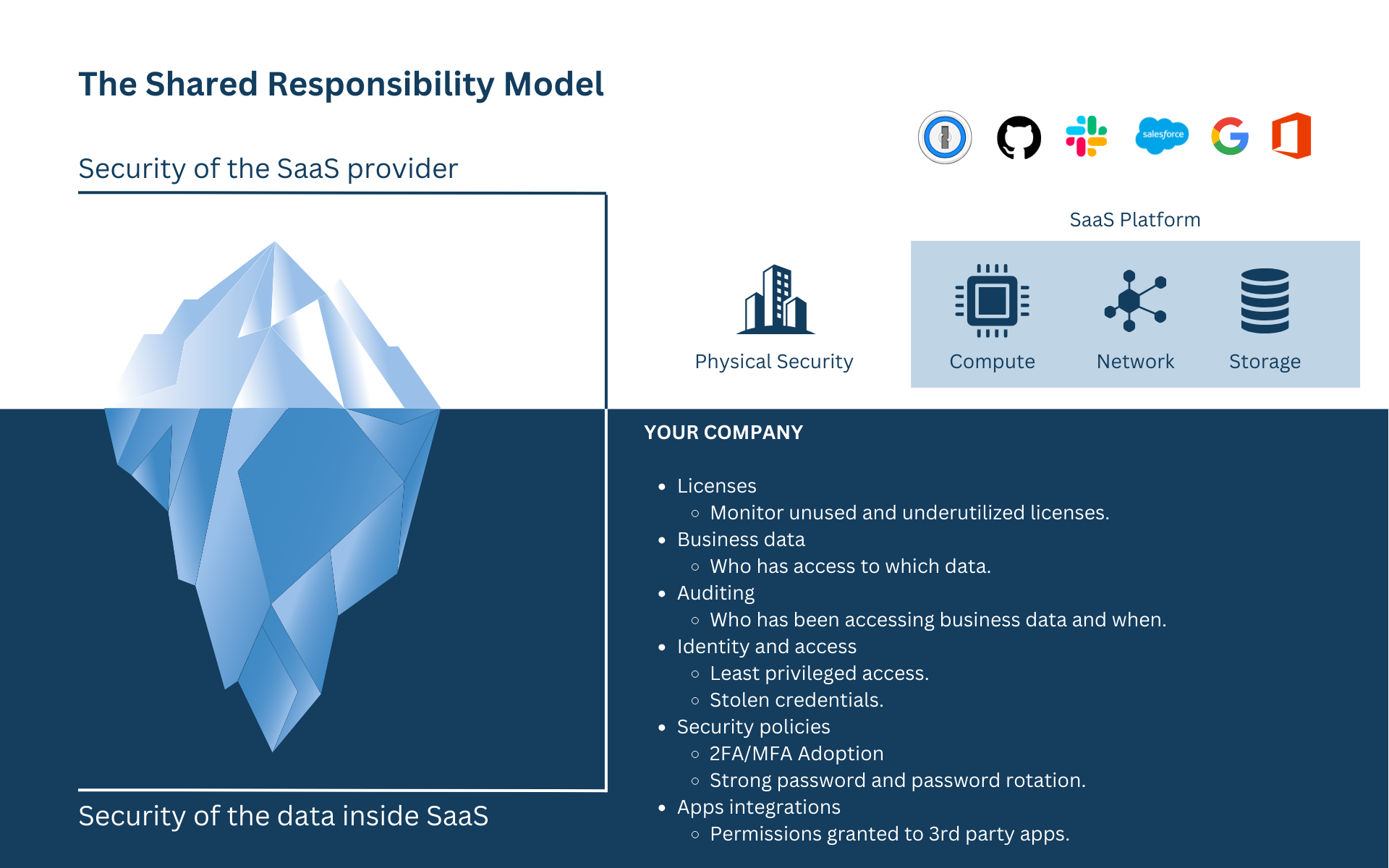Why IT Teams Need a New SaaS Shared Responsibility Model

Table of Contents
In today’s ever-growing SaaS ecosystem, it’s not just IT’s role to secure the environment—it’s a shared effort. With more SaaS tools being adopted by non-IT employees, many critical security decisions are now being made outside IT’s control. That’s why the traditional SaaS shared responsibility model is showing cracks. It’s time for IT teams to adopt a more comprehensive and collaborative approach.
Understanding the Shared Responsibility Model
Think of SaaS like renting an apartment. The landlord (SaaS provider) is responsible for the structure, ensuring it’s secure and well-maintained. But the tenant (your company) is responsible for everything inside—keeping doors locked, maintaining safety, and ensuring valuables are protected.
With SaaS, the provider secures the infrastructure—networks, servers, and storage. But everything else—who has access to the data, how licenses are managed, and whether security protocols are enforced—is on you. And that’s where IT teams face challenges, especially when SaaS adoption bypasses official channels.
Why IT Should Be Concerned About Shadow SaaS

A staggering 90% of SaaS applications are introduced by non-IT departments. This means that well-meaning employees in marketing, sales, or HR are making critical decisions about app access, data storage, and security—often without proper oversight.
Take a marketing team using an unsanctioned project management tool like Trello. They assume it’s secure but may store sensitive customer data, inadvertently creating a Shadow SaaS issue. Without IT involvement, these applications introduce unknown security vulnerabilities, compliance risks, and inefficiencies. IT teams can’t protect what they can’t see. The more SaaS tools introduced outside your visibility, the higher the risk of data breaches and non-compliance.
Where the Traditional Model Breaks Down: The Employee Factor
Traditionally, SaaS security was a contract between the provider and the IT team. But in reality, the employees introducing new tools are the ones making critical decisions, like who gets access, what data is uploaded, and how it integrates with existing systems. Consider an employee using an AI-powered note-taking tool that’s automatically storing sensitive business discussions in an unapproved cloud storage. The risk? Unintentional data leakage, which is easy to overlook if employees aren’t educated on their responsibilities. Without the proper guidance, these employees create vulnerabilities that put the entire company at risk.
Real-World Example: The Snowflake Security Incident

A recent campaign targeting Snowflake customers is a clear example of the risks associated with shadow SaaS. Even though Snowflake was officially sanctioned by IT, employees created additional “shadow” instances without IT’s knowledge. The result? Sensitive data was exposed because IT couldn’t distinguish between approved and shadow versions of the platform. Even with approved tools, lack of oversight can still lead to security breaches.
The New Shared Responsibility Model: Expanding Beyond IT
To secure your business, the shared responsibility model must evolve. It’s not just about IT and the SaaS provider anymore — it’s about involving every employee who uses SaaS tools. Here’s how IT teams should approach this:
- SaaS Providers: Handle infrastructure security, including the physical data centers, networks, and underlying software.
- IT Teams: Define security policies, monitor SaaS usage, and ensure compliance with regulations.
- Employees: Follow company protocols, use tools responsibly, and enable security features like MFA and data encryption.
However, it’s not just about adding new processes—it’s about educating employees. IT teams need to offer real-time guidance on using tools securely. Security reminders, best practices, and policy enforcement are critical to ensuring that employees play their part in the shared responsibility model.
Conclusion: IT Must Lead the Way
As SaaS adoption grows, IT teams must take the lead in expanding the shared responsibility model. It’s no longer enough to manage licenses or block unsanctioned apps. Employees need to be educated and engaged in keeping the company secure.
Is your team ready to handle the complexities of the modern SaaS landscape? It’s time to adopt a new approach and ensure everyone understands their role in the shared responsibility model.

 Never miss a story from us, subscribe to our newsletter
Never miss a story from us, subscribe to our newsletter